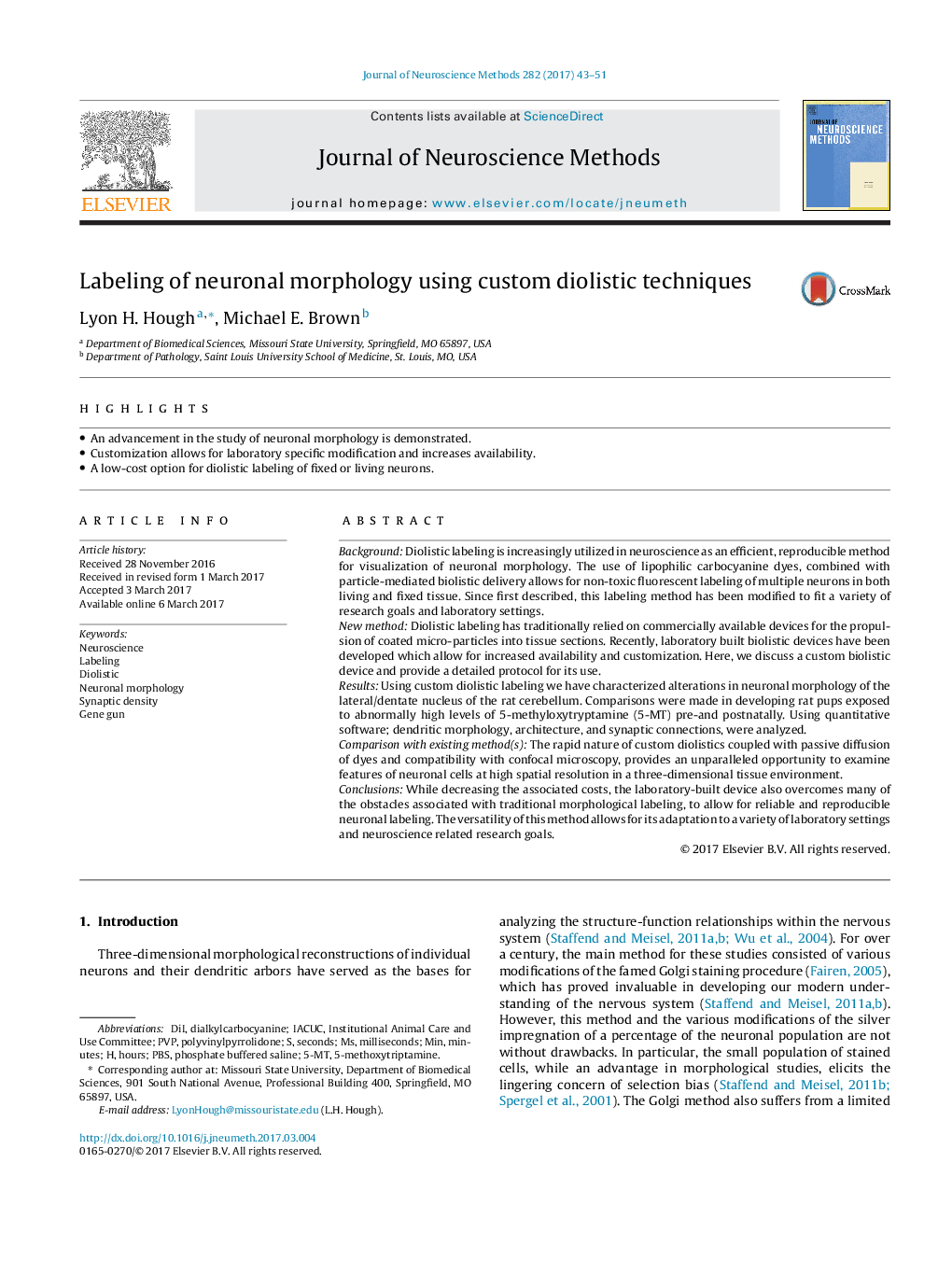| کد مقاله | کد نشریه | سال انتشار | مقاله انگلیسی | نسخه تمام متن |
|---|---|---|---|---|
| 5737293 | 1614587 | 2017 | 9 صفحه PDF | دانلود رایگان |
- An advancement in the study of neuronal morphology is demonstrated.
- Customization allows for laboratory specific modification and increases availability.
- A low-cost option for diolistic labeling of fixed or living neurons.
BackgroundDiolistic labeling is increasingly utilized in neuroscience as an efficient, reproducible method for visualization of neuronal morphology. The use of lipophilic carbocyanine dyes, combined with particle-mediated biolistic delivery allows for non-toxic fluorescent labeling of multiple neurons in both living and fixed tissue. Since first described, this labeling method has been modified to fit a variety of research goals and laboratory settings.New methodDiolistic labeling has traditionally relied on commercially available devices for the propulsion of coated micro-particles into tissue sections. Recently, laboratory built biolistic devices have been developed which allow for increased availability and customization. Here, we discuss a custom biolistic device and provide a detailed protocol for its use.ResultsUsing custom diolistic labeling we have characterized alterations in neuronal morphology of the lateral/dentate nucleus of the rat cerebellum. Comparisons were made in developing rat pups exposed to abnormally high levels of 5-methyloxytryptamine (5-MT) pre-and postnatally. Using quantitative software; dendritic morphology, architecture, and synaptic connections, were analyzed.Comparison with existing method(s)The rapid nature of custom diolistics coupled with passive diffusion of dyes and compatibility with confocal microscopy, provides an unparalleled opportunity to examine features of neuronal cells at high spatial resolution in a three-dimensional tissue environment.ConclusionsWhile decreasing the associated costs, the laboratory-built device also overcomes many of the obstacles associated with traditional morphological labeling, to allow for reliable and reproducible neuronal labeling. The versatility of this method allows for its adaptation to a variety of laboratory settings and neuroscience related research goals.
Journal: Journal of Neuroscience Methods - Volume 282, 15 April 2017, Pages 43-51
